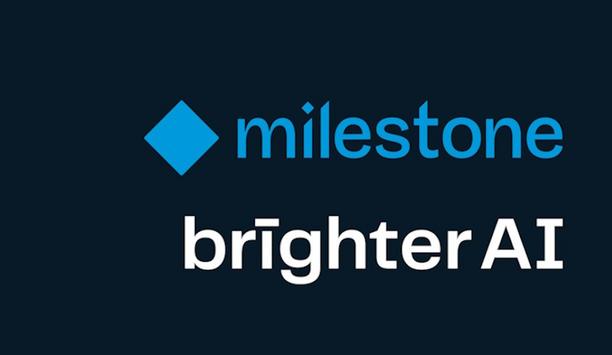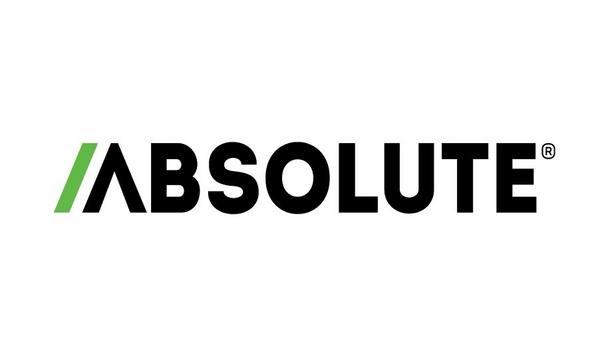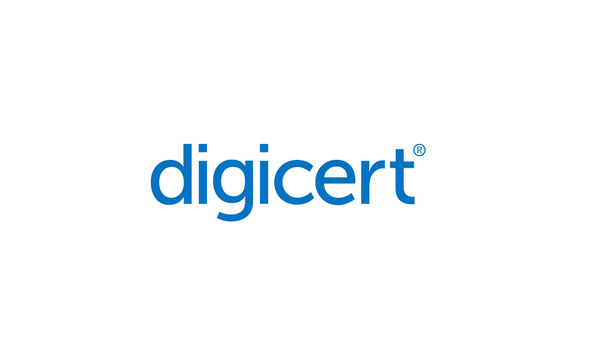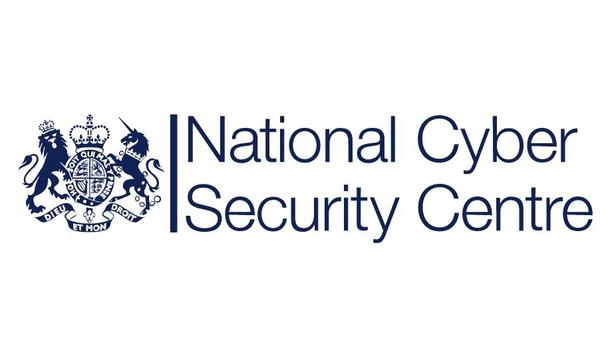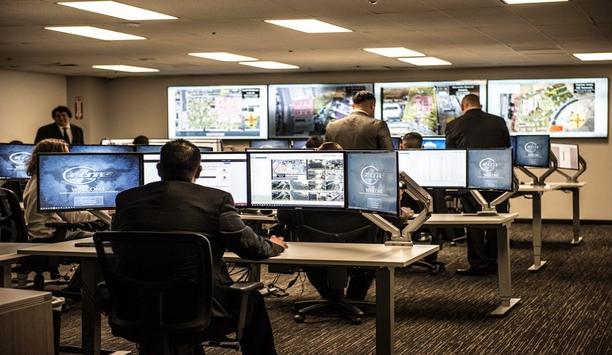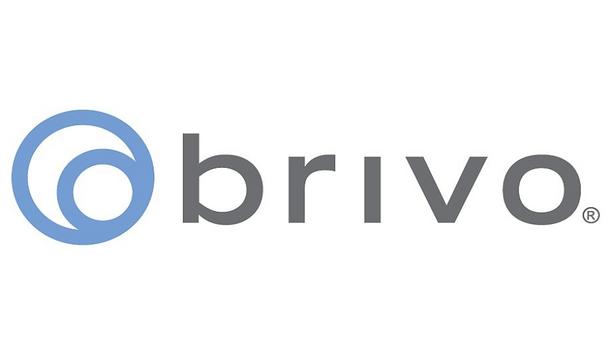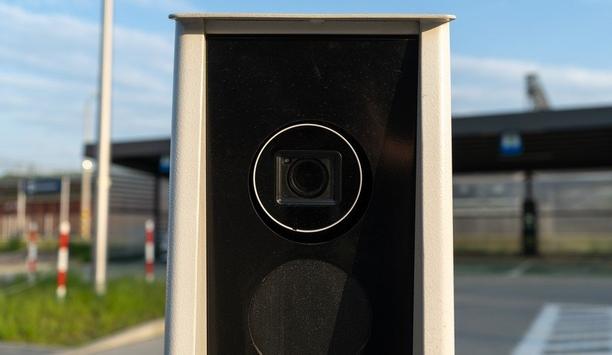Library security systems
Robotic Assistance Devices, Inc. (RAD), a subsidiary of Artificial Intelligence Technology Solutions, Inc., announced the expansion of its popular RIO™ solar-powered, mobile security solution lineup. Named RIO Mini, the new security solution is now in production, with the Company forecasting that it can add up to 500 units to its sales expectations this fiscal year. Mobile surveillance systems The Company joins LiveView Technologies Inc., which raised $50 million in a Series B round in...
Milestone Systems is pleased to announce the acquisition of brighter AI, effective April 1, 2025. The Berlin-based technology company, brighter AI, provides anonymisation solutions for video data based on state-of-the-art deep learning technology to protect people’s identities in public. The advances of artificial intelligence raise concerns around data privacy across the world. One of the biggest challenges in developing AI solutions is finding and accessing sufficient data that can be u...
Keysight Technologies, Inc. introduces Keysight AI Data Centre Builder, an advanced software suite that emulates real-world workloads to evaluate how new algorithms, components, and protocols impact the performance of AI training. KAI Data Centre Builder’s workload emulation capability integrates large language model and other artificial intelligence (AI) model training workloads into the design and validation of AI infrastructure components – networks, hosts, and accelerator...
Milestone Systems’ data-driven video technology took another leap in 2024: Financially, by outpacing the market with 18.7 percent growth in net revenue, reaching the DKK 2 billion mark - and technologically, with the strategic acquisition of BriefCam analytics and Arcules cloud. Milestone is now ready to expand and push technology boundaries. 2024 saw a remarkable transformation and success for Milestone. Breaking new ground through the strategic acquisitions of BriefCam analytics and Arc...
VITEC, a market-pioneering provider of IPTV, video streaming and digital signage solutions, showcased its ability to deliver end-to-end solutions for managing, recording, tagging, and retransmitting video streams with a unique workflow demonstration at Silvus Connect Germany 2024. The event – attended by military, government, and first-responder organisations from around the world – provided end users with first-hand experience of Silvus-based mesh networked communication solutions...
Seamless connectivity between CLIQ Web Manager (CWM) and the braXos Steward platform gives organisations’ access management even greater security, flexibility and functionality. This innovative integration helps security managers work smarter, save time, and seamlessly extend the reach of their existing access system with wire-free CLIQ digital and electromechanical cylinders. CLIQ digital access with HR The CLIQ Connector feeds a secure bi-directional link between CWM and access system...
News
Award-winning global security manufacturer, Gallagher Security is proving its commitment to empowering its UK and European Channel Partners with the launch of its new Channel Partner webinar programme. This latest initiative from Gallagher provides certified Channel Partners and their teams access to a series of Gallagher-led Security Design Training sessions. End-to-end Gallagher solution Gallagher has partnered with CPD UK to launch a webinar program offering a scheduled series of CPD Aimed at designers, estimators, and external sales staff, the sessions equip teams with the information they need to design, quote, and sell an end-to-end Gallagher solution. Further strengthening its Channel Partner support services, Gallagher has partnered with CPD UK to launch a webinar program offering a scheduled series of Continuing Professional Development (CPD) accredited webinars designed to support continued professional learning and development with Gallagher. New Channel Partner webinar series Gallagher Security, Regional Marketing Manager – UK and Europe, Bethan Thompson, says, “We are thrilled to launch our new Channel Partner webinar series." "Our CPD library has been designed for Channel Partners, consultants, installers, engineers, and business owners, and the feedback since launching earlier this month has been really positive, with a strong uptake of registrations for the first few webinars.” Experience of key security topics The series provides participants with the opportunity to earn 1 CPD point per session Covering topics such as access control – design principles, understanding access control credentials, integrated access control in a multi-tenanted building, cyber and high security in a business-integrated world, and integrated perimeter security, the series provides participants with the opportunity to earn 1 CPD point per session. Bethan adds, “The webinars are an opportunity for participants to increase their knowledge, understanding and experience of key security topics or verticals, and support ongoing and planned learning and development. Upon completion, certificates are issued to participants.” Focus on new products and solutions The Gallagher team will continue to add new webinars to the programme, with a focus on new products and solutions, upcoming Command Centre releases, and its integrated solutions with strategic technical partners. Delivered by Gallagher Security Business Development Managers and Technical Account Managers, registrations for next month’s webinars are now open, and cover design training, understanding access control credentials, integrated access control in a multi-tenanted building, and cyber and high security in a business-integrated world.
Allegion UK, a pioneer in fire safety hardware and manufacturer of ‘Briton’ door controls, has expanded its library of customer support materials with new installation videos for its highly popular 2003 and 2003V surface-mounted door closers. Aim to publish a video Allegion’s newly published video series provides customers with an illustrative set of installation and adjustment instructions for door mount pull, transom mount, and parallel arm mount fixings across its major product lines. With each video, Allegion aims to improve the accuracy of door closer fittings by delivering a comprehensive walkthrough of the 2003 and 2003V installation process, from the product unboxing to its fixing methods and measurements, as illustrated by Briton’s unique self-adhesive Accufit template system. Step-by-step installation guidance Allegion will shortly complete a suite of digitally curated support materials, which includes technical datasheets With plans to further develop the video library to include step-by-step installation guidance for the Briton 2130B overhead closer, Allegion will shortly complete a suite of digitally curated support materials, which includes technical datasheets, product certifications, fixing templates, and downloadable service and maintenance instructions. Speaking on the ambitions behind the new installation videos, John Fairhurst, business development manager at Allegion UK, commented, “Where the safety of buildings and their occupants is reliant on fire door hardware, we too often identify inaccurate installation as a leading cause for inadequate product performance." Fire door safety standards "To prioritise fire safety, we believe it’s crucial to eliminate the issues associated with incorrect hardware installation, and by adding short and engaging video content to our resources, we can further support our customers in this area." “Driven by our ongoing commitment to improving fire door safety standards, and following the success of our updated Accufit system for the 2003 and 2003V, we have also developed a new Accufit template for the Briton 2130B, which is available now and will feature in a standalone series of installation videos set to launch later this year.”
Absolute Security, the pioneer in enterprise resilience, announced that the Absolute Resilience Platform has expanded to provide customers with integrated, resilient, and automated patch management, vulnerability scanning and remediation, workflow automation and remote “one-click” endpoint rehydration. Unified with existing Absolute capabilities, this single-platform approach delivers needed security and risk capabilities, reduces the cost of endpoint management, and improves resilience across endpoints and critical security and IT controls to ensure your enterprise remains always on, fully operational, and protected against threats and disruptions. Absolute’s expanded platform "Organisations struggle to respond to costly outages and security failures caused by complex and fragile tools. Resilience data we analysed from millions of PCs shows that almost a third of the time, top security controls and management tools fail to maintain levels of efficacy and compliance needed to defend against attacks and recover from disruptions,” said John Herrema, Chief Product Officer at Absolute Security. “Absolute’s expanded platform offers a simplified, cost-effective, and improved approach to endpoint security and management. Telemetry we look at demonstrates that when underpinned with Absolute resilience, customers’ mission-critical IT and security applications meet compliance and performance standards close to 100 percent of the time.” Gartner's two recent reports Absolute’s expanded forum now leads on both these trends by integrating living and new endpoint security Gartner has pointed out in two recent reports that Security Consolidation and Embedded Resilience are gaining ground as enterprise imperatives: Simplify Cybersecurity With a Platform Consolidation Framework, March 26, 2024; and Leadership Vision for 2025: Security and Risk Management, Jan. 13, 2025. Absolute’s expanded platform now leads on both these trends by integrating existing and new endpoint security, risk, and management solutions on a single, hardware-embedded resilience platform. In addition to existing visibility, control, application resilience, and self-healing, new modules include: Patch: Sophisticated patching and scanning automatically detects devices with OS or software vulnerabilities, eliminating manual IT operations and ensuring end users stay protected and productive. This module supports OS and security patching for Windows, Mac, Linux, and hundreds of leading third-party applications. Remediate: Comprehensive, automated scanning and monitoring for OS and security vulnerabilities, misconfigurations, and authorisation issues finds and remediates exposures before they are exploited. This module includes a library of thousands of prebuilt remediation workflows that can be customised or extended using a simple no-code workflow builder to meet unique enterprise requirements without the need for highly technical and error-prone scripting. Automate: Intuitive, no-code workflow builder defines and automates endpoint and server management and security, identifies behavioural and device status changes in real-time, and executes self-healing workflows to eliminate configuration drift to ensure endpoints and servers stay secure, compliant, and performant. Rehydrate: Within minutes, this remote, one-click innovation can restore remote and hybrid PC fleets to full operational capacity following a ransomware attack or IT incident, even when the device OS and other security and management tools are crashing, compromised, or corrupted. IT and security teams “Managing and securing PC fleets has become increasingly challenging. Juggling disparate, manual technologies places strain on IT and security teams, creates security and compliance blind spots, and introduces complexity that can bring business to a halt,” said Nima Jouyandeh, MIS – Infrastructure and Network, Kingston Technology. “As long-time Syxsense customers, we are excited by the prospect of having access to a more robust consolidated platform. The opportunity to simplify management, gain a full view of our endpoint infrastructure, automate processes, and ensure that we remain secure, compliant, and resilient against attacks, threats, and incidents is definitely compelling.” The new modules are available now in the Resilience, Resilience for Security, and Resilience for Automation editions.
Comelit-PAC has launched a new website as part of its “Feel Secure” messaging, designed to transform how customers access vital information and connect with the company. The redesigned platform features two targeted sections: one for installers, presenting technical insights, training resources, tools and updates on the latest smart solutions. And another for end users, offering product overviews, benefits and tutorials. Exploring Comelit-PAC’s offerings The website makes it simple for every visitor to find the required information exactly as and when it’s required With its sleek, user-friendly interface, the website makes it simple for every visitor to find the required information exactly as and when it’s required. It is a one-stop resource for exploring Comelit-PAC’s offerings, accessing essential materials and staying informed about the latest innovations. “Our new website is an integral part of our new ‘Feel Secure’ ethos,” says Francesca Boeris, Managing Director for Comelit-PAC. “We’ve created an intuitive, content-led platform that combines everything about Comelit-PAC. It’s designed to be a quick, accessible resource, giving our partners the tools and information they need to make informed decisions.” Latest blog insights and installation tips For installers, the website offers a wealth of videos and the latest blog insights and installation tips. Visitors can also seek technical support information for tailored advice, project-specific guidance, and ongoing support, reinforcing Comelit-PAC’s commitment to trusted partnerships. The new corporate website reflects Comelit-PAC’s dedication to innovation and is built to evolve with its users. Regular updates will showcase the latest security and fire safety advancements, helping customers and installers stay ahead in a fast-paced industry. Comelit-PAC’s dedication The new website underscores Comelit-PAC’s dedication to exceptional customer experiences As Francesca concludes: “Comelit-PAC has always been dedicated to helping customers feel secure, and this new website reflects our responsibility to support them at every step. It’s more than just an online platform – it’s a gateway to success, empowering our partners with the resources and guidance they need to thrive.” By combining streamlined navigation with an extensive library of resources, the new website underscores Comelit-PAC’s dedication to exceptional customer experiences. Comelit-PAC’s professional site The new corporate website will work alongside Comelit-PAC’s professional site, which remains the go-to place for product specifications, datasheets, technical documentation and installation guides. Together, they provide a complete online resource to support installers and end-users.
DigiCert, a pioneering global provider of digital trust solutions, announced the release of its open-source Domain Control Validation (DCV) library, building on its contributions to the PKI community. The release of the new library is designed to strengthen the domain validation process and reduce errors in certificate issuance. This latest release joins pkilint, another open-source tool from DigiCert that ensures certificates are accurate and comply with standards. DigiCert’s open-source library DCV process is vital for ensuring that only the owner of a domain can be issued a certificate for it The DCV process is critical for ensuring that only the proven owner of a domain can be issued a certificate for it. Until now, many CAs have had to develop their own proprietary code to meet compliance requirements—a task that can be resource-intensive and inconsistent. DigiCert’s open-source library solves this problem by providing a pre-vetted, standards-compliant solution that raises the bar for industry transparency and security. New standard for transparency “This library reflects our commitment to advancing the security and reliability of the internet,” said Deepika Chauhan, Chief Product Officer at DigiCert. “By open-sourcing our DCV library, we’re not only sharing the tools we’ve refined over years of experience, but we’re also fostering trust and collaboration across the Web PKI community. We believe making this library available to everyone will set a new standard for transparency and compliance, ultimately benefiting the entire digital trust community.” Key benefits of the open-source DCV library Compliant DCV Practices: Offers CAs a robust, pre-built solution for performing domain control validation in alignment with industry standards, eliminating the need to create and maintain proprietary code. Enhanced Transparency: Open access allows the global community to review, test, and validate the code, fostering trust and collaboration. Community-Driven Hardening: Public scrutiny will identify and mitigate vulnerabilities, further strengthening the library’s security and efficiency for DigiCert and other users. Two critical challenges The release of DigiCert’s DCV library is an industry first for the certificate authority ecosystem. While open-source PKI solutions are not new, no organisation has specifically open-sourced a dedicated DCV library until now. This initiative addresses two critical challenges: Accessible, Scalable Implementation: The library provides developers with an open, transparent, and scalable solution for domain control validation. Many certificate authorities lack the resources to develop and maintain a robust, field-tested implementation of this critical digital trust process, making the library an invaluable option. Enhanced Security Through Community Scrutiny: As the first open-source DCV implementation, the library invites widespread industry scrutiny, enabling vulnerabilities and other bugs to be identified and addressed more quickly. Closed-source implementations often leave risks undetected for years due to limited testing resources. By fostering collaboration and accountability, this initiative strengthens digital trust across the ecosystem, incentivising CAs and developers to ensure the library meets the highest standards of quality and security. Expanding the commitment to the Web PKI community The open-source DCV library builds on DigiCert’s legacy of leadership in advancing transparency and best practices within the Web PKI space. Just as DigiCert has enhanced trust through innovations like Certificate Transparency and pkilint, this initiative represents another step forward in safeguarding the integrity of the internet.
The National Cyber Security Centre (NCSC) new cyber chief, Richard Horne, has issued a stark warning about the growing complexity of “widely underestimated” cyber threats. Speaking at the launch of the NCSC’s eighth annual review, Richard Horne, Cyber Security Chief, commented: “What has struck me more forcefully than anything else since taking the helm at the NCSC is the clearly widening gap between the exposure and threat we face, and the defences that are in place to protect us.” Intensity of cyber-attacks Horne emphasised the frequency, sophistication, and intensity of cyber-attacks, which now target everything from healthcare to education, and has called for urgent collective action across public and private sectors to address these evolving threats. He stressed that the human cost of cyber-attacks is undeniable, and the UK’s reliance on technology has left it vulnerable to exploitation. Cost of cyber threats Horne highlighted the increasing frequency and sophistication of hostile cyber activity, particularly from state actors Horne highlighted the increasing frequency and sophistication of hostile cyber activity, particularly from state actors like Russia and China, who exploit the UK's technological dependency to disrupt and cause destruction. He also pointed to recent cyber incidents, such as attacks on Synnovis and the British Library, which illustrate the human cost of cyber threats and the urgent need to enhance the resilience of critical infrastructure, supply chains, and the economy. UK's cyber risks Andy Ward, SVP International Absolute Security: "The NCSC highlights the alarming reality that the UK's cyber risks are growing faster than our ability to address them. This activity from state actors like Russia and China, combined with increasingly sophisticated cybercriminals leveraging AI, exposes critical vulnerabilities in our infrastructure, economy, and public services." "Alongside the NCSC warnings, our research shows that almost half (47 percent) of businesses have reported an increase in the volume of state-sponsored cyber threats over the past year. This reflects the urgent need for organisations to strengthen their defences against increasingly aggressive and sophisticated threats." Cyber resilience strategy Ward added: "The rise in incidents handled by the NCSC shows that these threats are not just hitting more frequently, but with greater severity. To address this, it is vital to implement a robust cyber resilience strategy." "This includes investing in prevention and recovery technologies to fortify defences, adopting incident response frameworks to reduce risks and minimise downtime, and enabling real-time visibility across all devices and applications so centralised IT teams can detect suspicious activity early." Digital health and security risk Matt Gibney, CTO of adCAPTCHA, commented: “Cyber and bot attacks are no longer a distant concern, they are a very real and growing threat that can target any organisation or individual." "With services becoming increasingly digitised, creating countless new entry points for cybercriminals, it's critical for businesses to conduct regular audits of their digital health and security risk to avoid falling victim to a costly breach." Cybersecurity audit Gibney added: "The NCSC highlights how the risks we face are widening faster than our defences can keep up, with cyber threats becoming more frequent, sophisticated, and impactful. A key part of these risks is the rise of bot networks. Once bots infiltrate IT systems, they can scrape and steal valuable data, sell monetised advertising space and content, and cause major financial losses." "This why monitoring for the presence of bot networks should be an essential part of any cybersecurity audit. Uncovering the full extent of bot issues allows organisations to prioritise investment in detection and prevention systems, ultimately strengthening their overall cyber resilience.” NCSC’s Annual Review The NCSC’s Annual Review highlights the rising use of artificial intelligence (AI) by cybercriminals, making attacks more efficient and harder to detect. Over the past year, the NCSC managed 430 cyber incidents, including a rise in data exfiltration and ransomware attacks, with sectors such as academia, manufacturing, and IT remaining highly vulnerable. The NCSC urges organisations to adopt stronger cybersecurity practices to mitigate these risks.


Expert commentary
The average business owner or investor has some kind of security precaution in place, especially in the after-hours when there are fewer deterrents to inhibit criminal activity. Security guards, video surveillance systems, motion sensor lights, or even just fake cameras placed around the property are some of the common options people choose. Future of overnight security Smart business owners are starting to realise, however, that some of these traditional security measures are becoming antiquated and no longer cutting. The now and future of overnight security is in remote guarding. Pioneered by companies like Los Angeles-based Elite Interactive Solutions, which was founded back in 2007, remote guarding is revolutionising the overnight security business. Minimising criminal activity Remote guarding is fast becoming the most popular choice among commercial end-user property owners Remote guarding utilises a combination of cutting-edge technology, “digital guards,” highly trained security agents, and local law enforcement if and when necessary to minimise the potential of criminal activity. For those adequately enlightened to its overwhelmingly impressive crime prevention capabilities, remote guarding is fast becoming the most popular choice among commercial end-user property owners to secure and protect their investments. What Is remote guarding? Remote guarding is a revolutionary concept and increasing trend in security systems that utilises a combination of methods to effectively analyse potential threats to property. Cameras and/or other monitoring devices running highly advanced algorithmic software are installed in strategic areas or vulnerable places onsite and remotely located security agents are immediately notified of any activity within a designated perimeter of the property. A blend of AI, cybersecurity, and video analytics When properly deployed by an expert provider, the technology stack includes a proprietary blend of video analytics, artificial intelligence, cybersecurity, and more. Done right, “noise” is effectively filtered out, allowing agents to act on legitimate alerts and achieve zero false alarms communicated to first responders. Today, there are a lot of terms and descriptions tossed around about remote guarding, remote video, virtual guarding, etc., but those attributes must be present to represent the true definition of the offering and its many virtues. Realtime situational awareness Many systems have a two-way speaker that allows the security agent to give a verbal warning When specially trained security agents are alerted to trespassers, possible intruders, or other suspicious activity, they analyse the situation in real-time and determine the necessary level of action. Many systems have a two-way speaker that allows the security agent to give a verbal warning, known as a voice-down, to the individual(s) that they are being watched. Most perpetrators, often believing the response is emanating directly from security personnel on the property itself rather than from a remote command centre, flee immediately. However, if the threat persists, the security agent enlists local law enforcement to get on the scene. Customised remote guarding When properly deployed, remote guarding systems are also customised to specific properties. A team of consultants visits the client’s property to evaluate its vulnerabilities and where to best place cameras and/or other monitoring devices for system efficacy. Traditional security shortfalls According to Keith Bushey, a retired commander for the Los Angeles Police Department, there is much frustration between law enforcement officers and potential victims of crime due to the historically unreliable performance of traditional burglar alarm systems and central monitoring stations. He states about 90% of security-related calls are false alarms, a problem that has been well-documented through the years. Onsite challenges When a legitimate emergency does occur, the perpetrators have often already done their damage When a legitimate emergency does occur, the perpetrators have often already done their damage and/or escaped by the time law enforcement arrives. Onsite security guards are not the remedy either as they bring their own set of issues and challenges. Unexpected costs Traditional security systems can also have unexpected costs. The cost is not only in the security guards’ paycheck or the cost of the equipment itself. The cost comes when an actual incident occurs. In worst-case scenarios, the security guard(s) are injured, the business suffers inventory loss, and/or damage is sustained to the property. The medical and other costs for the security guard(s), the loss of inventory, property damage, deployment of law enforcement resources, and possible fallout of legal expenses all add up. Even in the best-case scenario, false alarm expenses incur if law enforcement is dispatched. These, among many others, are some of the primary issues that remote guarding resoundingly answers as a superior alternative. A bounty of benefits Remote guarding systems have been proven to cut costs and be more effective than traditional security systems. Even though the monthly monitoring costs of remote guarding are significantly higher than traditional intrusion detection system monitoring, the much higher effectiveness in crime reduction, elimination of false alarms, and augmenting or replacement of manned guards result in a substantially higher return on investment (ROI) to the end user. Easy tracking of threats The security cameras already have their image captured on record, making them easier to track down For example, case studies have demonstrated reduced security costs for clients by 60%, on average. These reductions have come from the costs of security staff, inventory, or property loss, plus saving money on insurance premiums and deductibles. The nature of remote guarding reduces the risk and costs of false alarms, with professional security agents able to determine an actual threat before law enforcement is called. In a rare instance when a perpetrator escapes before law enforcement arrives or can detain the individual(s), the security cameras already have their image captured on record, making them easier to track down and identify. Reduction of false alarms The significant reduction in false alarms is greatly appreciated by law enforcement, as it allows them to focus on real emergencies or crises. Better relationships are also developed between clients and law enforcement, as remote guarding systems are highly reliable in providing accurate and real-time information to officers as they approach the scene. In short, it assists law enforcement in doing their job more effectively, as well as more safely thanks to having eyewitness information before engaging in an active crime scene. Partnership When you combine the decreased cost with the increased efficiency and success rate, it is easy to see why many commercial end-user property owners across the country are making the shift to remote guarding. It’s also an outstanding opportunity for professional security dealers and integrators to partner with a remote guarding services provider to bring a superior solution to their end customers and pick up a recurring monthly revenue stream in the process.
It’s no secret that the data security sector is constantly changing. It has an annual CGR of about 12.3%. Future trends in data security Much of this has to do with the rise of cybercrime in recent years, with reports showing that cyberattacks happen as often as every 39 seconds. To combat the growing rate of cybercrime, data security has been on the rise. As we journey further into this era, it becomes evident that a spectrum of significant trends is molding the future of data security. This exploration delves into a selection of these trends, unraveling their importance and the potential implications they carry 1. AI security tools will increase Artificial Intelligence is also being used in the development of smart attacks and malware The introduction of Artificial Intelligence in the data security industry brought significant changes, especially in cybersecurity. AI has been the golden standard for face detection, natural language processing, automated threat detection, and automated security systems. Additionally, Artificial Intelligence is also being used in the development of smart attacks and malware, bypassing even the latest security protocols in data control. And as time progresses, AI security tools will flourish and dominate the scene. Let’s take a more in-depth look at three of the top AI security tools. Targeted attack analysis tool Manufacturers utilise targeted attack analysis tools to uncover targeted and stealthy attacks. Artificial Intelligence can be applied to the program’s capabilities, processes, and knowledge. For instance, Symantec launched this tool to combat the Dragon 2.0 attack in 2022. The phishing attack reprimanded multiple energy companies while trying to gain access to their operational networks. Targeted Attack Analysis Tools can analyse incidents and look for similarities from previous situations. They also help detect suspicious activities and collect all the necessary data to determine whether a specific action is malicious. Intercept X tool Results from the Intercept X Tool feature high accuracy and a low false positive rate Sophos, a British security hardware and software company, launched the Intercept X Tool. It engages a neural network that records and analyses data like a human brain. Sophos’ Intercept X Tool can extract features from a single file and perform a deep analysis. It detects malicious activities within 20 milliseconds. Plus, it’s also trained to work on bi-directional sharing and real-world feedback of threat intelligence. Results from the Intercept X Tool feature high accuracy and a low false positive rate. IBM Watson Technology IBM’s QRadar Advisor uses IBM Watson Technology, a unique AI tool for fighting cyber attacks. Artificial Intelligence can auto-investigate activities and indicators for potential exploitation or compromise. With cognitive reasoning, IBM Watson Technology can present critical insights to accelerate the response cycle. Security analysts can utilise this technology to search for threat incidents, reducing the risk of letting them fly under the radar. 2. Blockchain as a security solution It guarantees no points of failure or hackable entrances that can expose datasets inside the system Blockchain is a type of distributed ledger technology (DLT) that aims to establish trust within an untrusting ecosystem. Today it’s one of the most robust cybersecurity technologies in the industry. Blockchain utilises a decentralised ledger system, but your team members can still gain access to transparent information in the cloud. Members can also record, pass along, and view necessary transactional data in the blockchain. The entire blockchain process maintains data integrity within the system while establishing trust among team members. It guarantees no points of failure or hackable entrances that can expose datasets inside the system. Cybersecurity, biometrics Cybersecurity primarily benefits from these features because blockchain can create a secure and robust wall between data and hackers. On top of that, blockchain ledgers can include biometrics like fingerprints and retina scans. These prevent hackers from accessing any private data. Because blockchain is decentralised, it also limits hackable data. Together with the technology’s record-keeping system, each node is provided insight into data manipulation exposing real-time cybercrime attempts. 3. Increased and widened access control Without access control, expect your company to be open to security issues, including theft, data loss, and breach of data Access control is critical in data security. More than a valuable security tool, business leaders can use access control to regulate people accessing any given resource. A company with an IT security setting can control who has the liberty to edit certain files. One of the primary goals of access control is to minimise threats or attacks to organisations and businesses to keep people and data secure. Without access control, expect your company to be open to security issues, including theft, data loss, and breach of data protection laws. Benefits The benefits of increased and widened access control include: Identifying who can access and control your data at specific time intervals. Protecting data from overwriting, accidental deletion, and malicious intent. User permissions that can be readily changed. Compliance and regulation with data privacy laws. Central management of access to data through a reporting portal or a dashboard. Multi-factor authentication Access control comes in various types and systems, so it’s critical to know the features of what you’re looking for. The most common type is multi-factor authentication or MFA. It involves multiple steps before logging in, requiring the user to enter other relevant information besides the password. Some other examples of information include biometrics, answering a security question, or entering a code sent to the user’s email address. Two-factor authentication, role-based access control Two-factor authentication further prevents unauthorised entries that can result in unnecessary data possession Two-factor authentication further prevents unauthorised entries that can result in unnecessary data possession. Another type of access control is role-based access control. In this setup, only one individual can set up access guidelines and grant permissions to specific team members within an organisation. 4. Greater use of the zero-trust security model The zero-trust security model is a framework that requires every user within and outside the organisation to undergo authentication, authorisation, and validation. These are all essential to ensure proper security configuration before access is granted to the company’s applications and data. A zero-trust model assumes that anyone can cause data breaches and that a traditional network edge is not taken into effect. Moreover, it addresses the following modern-day challenges: Hybrid cloud environments. Security of remote workers. Ransomware threats. This framework utilises the combination of multiple advanced technologies, including: A risk-based multi-factor authentication. Endpoint security. Identity protection. Cloud workload technology. The zero-trust model uses all these innovative tools for system identification, user verification, access consideration, and system security maintenance. Constant validation and monitoring Enforcing strict policies and compliance with data privacy laws are also essential Additionally, it also considers data encryption, email security, and asset verification before establishing connections with applications. The architecture of a zero-trust framework requires constant validation and monitoring of the users and the devices they are using. Enforcing strict policies and compliance with data privacy laws are also essential. More importantly, the zero trust architecture requires all organisations to be aware of all their available services and accounts to gain complete control of data handling and manipulation. 5. Increased privacy regulations Privacy regulations and policies guide organisations in proper data control, handling, and security. These policies guide organisations in proper data control, handling, and security. As a responsible business owner, you must comply with these regulations to avoid legal issues. With cybersecurity attacks becoming common, expect increased and stricter privacy regulations to be released in the next few years. While current policies are still taken into effect, various modifications and adjustments will occur to compete with the rising numbers of data breaches, thefts, data loss, and more. California Privacy Rights Act (CPRA) Currently, the California Privacy Rights Act (CPRA) is the most comprehensive legislation on state data privacy. It only started to take effect on January 1, 2023. The CPRA introduces the following principles: Broad individual consumer rights. Significant duties of people who need to collect sensitive and personal information. Additional definitions of data privacy and security. An individual’s duties include releasing information about data collection to concerned data subjects and proper access, correction, and deletion of information. Final thoughts 2023 is a big year for data security. Trends such as increased adoption of zero-trust policies, a greater reliance on AI security tools, and the implementation of blockchain as a security solution are all things we expect to see shortly. Staying up-to-date with these trends is important for keeping your business current and ensuring that you’re adhering to new and changing regulations. Doing so can give you an edge over the competition and keep you out of legal hot water.
We work with and buy from “middlemen” all the time, yet the term remains loaded with negative connotations. It’s telling that the term remains gendered, no one has tried very hard to normalise the term “middleperson” in the same way as “chairperson” or “police officer.” Why? It’s easy to see a middleman as an inconvenience, someone who skims profit off the top while offering no real value to the end customer. Think of the second-hand car salesperson or estate agent of the popular imagination. Management of added services Yet we buy from retailers and marketplaces every day without complaint. As long as we see a middleman as providing value and convenience rather than getting in the way, they’re safe. This does mean, however, that resellers and integrators need to carefully manage how they are perceived and how much their added services are valued by their customers. The risk to security integrators Security policies need to be integrated, and the way physical and cybersecurity works needs to reflect these policies Businesses have often relied on security integrators to break down silos between security systems to strengthen both physical and cybersecurity postures. Typically, these have been seen as separate, but the increase in remote working and the adoption of cloud-based physical security has blurred the lines between the physical and the digital. Security policies need to be integrated, and the way physical and cybersecurity works needs to reflect these policies, rather than a siloed approach that will mean one is more secure than the other, and security integrators can help bridge this gap. Macroeconomic headwinds, digital transformation Security integrators have also proved invaluable in filling skill gaps within organisations. Not every business can be expected to have the staff and skills needed to successfully overcome integration challenges, they may have cybersecurity and physical security experts, but perhaps not both. And if they do have experts on staff, they may lack knowledge of the cutting-edge technologies that will protect their businesses best. This unique and esteemed role of security integrators is today at risk of disruption. Macroeconomic headwinds mean that businesses are scrutinising every budget line and asking if each is necessary. Digital transformation means they are questioning old ways of doing things are the providers they worked with five years ago, or longer, the same people who are going to give them the best value today? Research findings on current trends Unfortunately, many security integrators are not keeping up with change. Our research has found that only 26% of customers consider integrators up to date with the latest technologies. Businesses rely on these providers to navigate a new and confusing security landscape and only one in four say they are confident their partners have researched the road ahead. In the past, providers may have relied on having better knowledge than their customers. But 73% of security solutions buyers are doing their research on vendors and technology. Integrators risk being underprepared to serve a market that is more and more educated in the products they are providing a dangerous situation for any middleman. Finding the gap Who needs to outsource in-depth technical knowledge of security when they have that knowledge available in-house? The research suggests a shrinking gap for security integrators. Who needs to outsource in-depth technical knowledge of security when they have that knowledge available in-house? However, the problem may not be as dire as the research first suggests as long as integrators act to address the risks they face. Education Businesses are educating themselves about the market. They want to know what is available to stay safe, both in a physical environment and from online threats. This is understandable given how the news cycle, both of these spaces have seen an increase in potential threats, and the cost of cleaning up after a ransomware or similar attack has spiralled. Any sensible business will review what they have in place and their future options. Advance industry knowledge It has never been more important for the integrator community to advance their industry knowledge. They truly are the experts, and have an in-depth understanding of the latest trends, the advancement in cloud security, and the shifting demands of users. They also need to provide better service and consultancy. As the security world gets smarter and more cloud-based, security integrators who are well-informed and educated will have a clear advantage in the market. After all, most businesses don’t want to spend time researching and upskilling in areas where they can effectively outsource. Security integrators must be able to reassure their customers that they are up to the task. Bring on added value But to thrive, security integrators need to bring more value to the table and also be seen to be providing more value The problem may be perceptions rather than the actual value that integrators can offer. If integrators are more informed than their customers realise, they need to do more to let their customers know. This could be down to being too reactive i.e., not anticipating customer needs and simply waiting for them to ask for particular services or products or not demonstrating knowledge as part of regular customer service. There is still very much of a gap for security integrators in today’s market. They can survive in this gap. But to thrive, security integrators need to bring more value to the table and also be seen to be providing more value, more than a middleman, but a provider that can advise on the right products to meet specific needs and make those products work for their customers in an integrated way. Reinventing via consultancy They need to provide consultancy so their customers understand how best to ensure online and physical security work together to keep a business safe. Most of all, they need to demonstrate their knowledge to their customers and make sure they understand the value they bring. Businesses won’t be safer by relying on their research and knowledge to buy and install security products, but if they don’t understand the benefits of a specialist integrator, they may choose this route. It’s up to security integrators to reinvent themselves as the better kind of middleman if they want to remain relevant.
Case studies
Wire bonding is a key process in semiconductor production. Extremely fine wires with diametres of 15 to 75 micrometres create tiny electrical connections between a semiconductor chip and other components. The distances between the bond wires are often less than 100 micrometres. Wire bonding Any deviation, however small, can lead to connection errors. Wire bonding therefore requires the highest precision and forms the basis for producing high-performance electronics, which are used in many different applications. F&S BONDTEC Semiconductor GmbH from Braunau, Austria, relies on image processing technology with industrial cameras from IDS Imaging Development Systems GmbH to precisely determine wire positions and for quality assurance. Application The operator only has to change the wire or tool on the bonder occasionally and take care of loading and unloading Wire bonders are available with various degrees of automation. With manual devices, each bond position must be approached manually before the corresponding connections can be made. Semi-automatic machines automatically position the wire after the first bond to create a wire bridge. Fully automatic machines use a structure recognition system to determine the position of the chips. Here, the production of all wire bridges is completely automatic. The operator only has to change the wire or tool on the bonder occasionally and take care of loading and unloading. Image processing F&S Bondtec uses image processing with IDS industrial cameras for various tasks in the production process, especially in the semi-automatic machines of the 56i series and the automatic wire bonders of the 86 series. "Our wire bonds connect previously placed microchips or other components with different contact points on printed circuit boards and breathe life into the chips," explains Johann Enthammer, Managing Director and CTO at F&S Bondtec. Bonding parametres Ultrasonic amplitude, force, time, or the movement sequence for setting up the bonding bridges must be programmed "However, positional inaccuracies of the components can occur during the upstream processes. Our machines have to determine these positional inaccuracies using the IDS camera image and our image recognition software and update the wire bond positions accordingly." For each bonding process, parametres such as ultrasonic amplitude, force, time, or the movement sequence for setting up the bonding bridges must also be programmed in advance. The camera's image feed is also used when creating these programmes. Image recognition library For example, you can drag a wire in the live image and change its position. The axes can also be adjusted by clicking on the image. On the software side, the Austrian company relies on a specially developed image recognition library that works with position/pixel mapping, greyscale recognition, and edge detection, for example. Visual assessments of bond connections Once the bonding process is complete, the camera is used again, as Johann Enthammer explains, "After welding, the wire bonds are visually checked by the operator via the camera image." "Among other things, the position and shape of the bond bridges are assessed. The camera image therefore has more than just one function during the bonding process." uEye XCP models At just 29 x 29 x 17 millimetres, they are the smallest housed IDS cameras with C-mount Between one and seven industrial cameras are used per system. Depending on the type, these can be particularly compact and cost-effective uEye XCP models. At just 29 x 29 x 17 millimetres, they are the smallest housed IDS cameras with C-mount and have a completely enclosed die-cast zinc housing. Their screw-type USB micro-B connection and compatibility with the Vision Standard (U3V / GenICam) simplify integration. uEye CP cameras F&S Bondtec also uses uEye CP cameras. These tiny powerhouses offer maximum functionality with extensive pixel pre-processing and are also perfect for multi-camera systems thanks to the internal 120 MB image memory for buffering image sequences. Users can choose from a large number of modern CMOS sensors. They also score points with a compact housing measuring just 29 x 29 x 29 millimetres. Camera selection The small design of the models and the large number of different sensors were important criteria when selecting the camera, as was the low thermal expansion. However, the free IDS peak software development kit with all the programming interfaces and software tools required for operating and programming the cameras was also crucial. Easy-to-understand convenience functions ensure an intuitive programming experience and quick and simple commissioning of the industrial cameras. Plug-and-play functions Johann Enthammer confirmed, "The driver shows very stable runtime behaviour. The easy-to-programme API and the plug-and-play functions with running software convinced us." "This is because there are many different use cases for our systems that can be implemented with the API without any problems. Our machines can be equipped with up to seven different bond heads. A different IDS camera can be integrated into each one." Outlook In addition to standard products, the company develops special machines and customised software solutions The wire bonders from F&S Bondtec ensure stable connections in semiconductor production. With the help of integrated image processing, the manufacturing quality and productivity of the systems can be further increased and rejects avoided. At the same time, the cameras make work easier for the operators. In addition to standard products, the company develops special machines and customised software solutions that also use AI models. Efficiency, precision, and quality "We see a lot of potential for the use of artificial intelligence in our applications in the future," says Johann Enthammer. Image processing opens up completely new potential, especially in conjunction with AI, particularly in terms of efficiency, precision, and quality. And thanks to IDS's broad portfolio, the right "eye" can be found for every application - for micrometre-precise results. Camera F&S Bondtec uses various uEye industrial cameras, for example: uEye XCP - the industry's smallest housing camera with C-mount Model used: U3-3680XCP Rev.1.2 Camera family: uEye XCP uEye CP - incredibly fast, powerful, future-proof Modell used: U3-3040CP Rev.2.2 Camera family: uEye CP Customer F&S Bondtec covers the desktop bonder and tester segment worldwide and offers a wide range of production and test equipment. It extends to the desktop micro-factory, which combines all wire bonding processes and all test methods in one machine base. Since the company was founded in 1994, several thousand wire bonders and bond testers have left the factory and are in use in many laboratories, development departments, pilot production lines, and production facilities around the world.
Named one of Money magazine’s Best Colleges in America 2023, Fairfax-based Geoge Mason University (Mason) is the largest public research university in the Commonwealth of Virginia. Its 10,000 faculty and staff provide classes and support services across three regional campuses, an international branch campus in Songdo, South Korea, and five instructional sites. With more than 40,000 students hailing from all 50 states and 130 countries and a six-year graduation rate that is well above the national average, Mason continues a rapid upward enrollment trajectory that saw headcount and credit hours increase by nearly 2 percent in Spring 2022 and Fall 2023 applications rise by 11 percent. R1 research university In addition to a heavy emphasis on diversity – U.S. News and World Report named it the state’s best public university for diversity and innovation – Mason is a pioneer in technology and research with 40 percent of its students majoring in STEM fields. It is also the youngest nationally ranked R1 research university, a top 10 public university for cybersecurity programmes, and a top 20 public university for five different engineering and education online programmes. University's challenge Providing an exceptional experience had to balance with the need to maintain public access to appropriate services Mason’s rapid growth requires it to embrace system-wide innovation, particularly when it comes to providing a safe, secure university environment for students, faculty, and staff. Providing an exceptional experience had to balance with the need to maintain public access to appropriate services, as well as the convenience of contactless entry and the ability to act quickly when credentials were lost, or stolen or the user’s status with the university changed. Goal “We have a very open campus. Most of our doors are unlocked from 7 AM until 11 PM and we have a public library, so we need to make sure access control isn’t in the way. On the other side, we need to make sure that if something does happen, we can react quickly to unfolding scenarios,” said Daniel W. Anthes, Director of Technology Services, at George Mason University. “The goal is to make it safe, easy, and seamless for people to navigate campus.” Case study Mason had already implemented a card-based access control solution featuring HID® Seos credentialling technology, HID OMNIKEY® chips, HID Asure ID card printing software, HID FARGO® printers, and HID Signo™ card readers. Photo identification cards were encoded with appropriate credentials allowing the holder to access everything from parking to residence and dining halls to facilities and services, including data centres, libraries, and shops by simply tapping or swiping. “Eventually, we reached the point that the switch to mobile credentialling was a straightforward next phase. This would make it easier for staff and students to get where they needed to be without having to fumble with a set of keys,” said Anthes. HID's solution HID Mobile Access lets any compatible mobile device – smartphones, tablets, or wearables – be used as a credential Mason again turned to HID and Atrium, deploying the HID Mobile Access® solution with Seos as the underlying credential technology. Atrium provisions and manages the lifecycle of the HID Mobile Access credentials. HID Mobile Access lets any compatible mobile device – smartphones, tablets, or wearables – be used as a credential to securely access doors, gates, networks, and more. It significantly increases convenience and boosts operational efficiency without compromising security. HID Mobile Access Because Mason had Signo readers already in place, deployment of HID Mobile Access required just a simple upgrade. Importantly, while mobile access eliminates the need for physical access cards, the highly versatile Signo readers support the widest range of credential technologies via native Bluetooth, Near Field Communication (NFC), and Apple Wallet – meaning those who choose to can continue using their physical ID cards until they are ready to transition to mobile access. Seamless integration “Once you get them using the technology, at that point the realisation hits that this phone access is awesome. Or you can use your Apple watch and never even pull your phone from your pocket. There are a lot of things you have to navigate when considering credentials." "Fortunately, the HIDand Atrium Campus partnership offers the complete solution, bundled together and working seamlessly in the way I expected. The seamlessness of the mobile credential and how quickly they can get where they need to be with their phone or wearable is cool to see in action,” said Anthes. Final results Mason’s more than 50,000 students, faculty, and staff can leverage mobile credentials at any campus In addition to access to approximately 7,000 doors across its campus locations, Mason’s more than 50,000 students, faculty, and staff can leverage mobile credentials at any campus cash register, printer, copy machine, and retail and recreational facility. Mobile access will increase the convenience factor exponentially for students, for example enabling express check-in for residence halls at the start 2024-25 school year which will let students bypass queues that in the past were hundreds deep and go straight to their dorm rooms. Mason Mobile ID Mason Mobile ID has also driven a significant drop in the issuance of temporary and replacement cards, saving both the university and students time, money, and frustration. Students can also easily switch credentials to a new wearable or mobile device, eliminating the need to have this done in person – a significant convenience when Apple released its iPhone 15 shortly after Mason transitioned to mobile access. Safety standpoint “We are only two months in, so there are a lot of benefits we have yet to see with Mason Mobile ID, but I’m excited about what we’ve already started noticing in terms of students engaging faster with their peers and community." "The police department also absolutely loves the wearables from a public safety standpoint, because they can get through the doors a whole lot faster than they could with the traditional cards or when they had to fumble with keys,” said Anthes. Operational efficiency Going forward, Mason is exploring expanding mobile access to shuttle buses, which would also allow them to track utilisation data, and for more special events access. “New technology like mobile access is how Mason improves operations, so if there is an opportunity, I will certainly push to have HID involved. There are a lot of things you have to navigate when considering credentials. Fortunately, the HID and Atrium Campus partnership offers the complete solution, bundled together and working seamlessly in the way I expected,” said Anthes.
Indexable inserts are interchangeable cutting tools that are indispensable in various industrial applications, especially in metalworking. They are used as cutting material carriers for machining metals, plastics or wood. Their manufacture requires high-precision production processes to ensure an exact geometry and perfect surface finish. Even minimal deviations affect not only the service life but also the performance of the cutting insert. The smallest defects that are invisible to the human eye can cause immense damage, for example when milling or cutting high-quality components - including consequential costs. Careful quality control is essential to ensure that only flawless indexable inserts leave the production process and meet the high requirements in terms of durability and reliability. A flagship project by automation and measurement technology specialist Xactools from Germany demonstrates how artificial intelligence can help visual inspection make quantum leaps. The German medium-sized company has developed a fully automated handling and inspection system for a global manufacturer of indexable inserts based in Scandinavia, in which the DENKnet solution for AI-based image evaluation plays a decisive role and sets new standards in terms of performance, zero-defect production and speed. Application Edges of the indexable inserts are rounded and ground, and their covers are blasted, ground and coated Around 1.2 million indexable inserts leave the Scandinavian company's production halls every week, which have to guarantee the highest possible process reliability and maximum productivity in the metalworking, automotive and aerospace industries, for example. They are manufactured using the sintering process, in which powdered metals, hard metals and other materials are pressed into the desired shape and then sintered, i.e., bonded together under heat and pressure. The strong and robust structure created in this way makes it possible to combine materials with different properties in order to achieve the desired cutting and wear resistance properties. After the sintering process, the edges of the indexable inserts are rounded and ground, and their surfaces are blasted, ground and coated. The Robotvision system from the Swabian engineers is used directly after the second manufacturing step, the sintering process. "The earlier defects are detected in the process, the better and cheaper it is to rectify them," says Marvin Krebs, Director Technical Sales at Xactools, explaining the system's position. A total of eight high-resolution industrial cameras and two spider robots are used to handle and inspect the indexable inserts for defects, which keep an eye on and load three rotary table nests and finally one pin pallet each. DENKnet's AI forms the heart of the complex image processing system between cameras, robots and a multi-GPU computing rack. Requirements The AI-based image evaluation software used had to be trained to correctly recognise As versatile as the areas of application of the small tool parts are, so varied are their properties and geometries. This manufacturer alone has around 2,800 products in its portfolio, which can be divided into almost one hundred geometry families. The aim was to automate handling and defect inspection for all of these. "The first challenge results from the numerous colour variations within the powder per pressing process," explains Marvin Krebs. "If certain parameters such as time, pressure or positioning vary, this leads to colour or gloss level deviations or to a different distribution of speckles on the surface, but this is not a defect." The AI-based image evaluation software used had to be trained to correctly recognise the numerous possible colour deviations of the surfaces and rate them as "OK". On the other hand, the smallest irregularities such as cracks, scratches, inclusions or other anomalies must be recognised as such and classified as "NOK". The inspection of metal surfaces is considered one of the highest skills of surface inspection, as their texture can be matt, shiny or even reflective. "The AI had to be extremely trained to variations and lighting conditions for this application," emphasises Marvin Krebs. AI results for the metal components The customer himself trained the customised image analysis solution with the DENK VISION AI Hub But in addition to the visual appearance, it is also about the insert geometry. Categories such as triangle, rectangle, rhombus or square can be found in countless variations due to the smallest deviations and are therefore divided into manageable subcategories, so-called geometry families. Xactools made the pre-selection for the training of the meshes; almost one hundred geometry families were defined and then taught in by the manufacturer itself. What sounds like a laborious undertaking was done surprisingly quickly. "No more than 20 to 30 images were needed to teach each geometry family," recalls Marvin Krebs. The DENKnet palletising AI used for this purpose uses the DENKnet segmentation and classification network. The customer himself trained the customised image analysis solution with the DENK VISION AI Hub. The AI was integrated into the production line in just a few months and achieved almost perfectly reliable AI results for the metal components to be tested right from the start. "Indexable inserts identified as defective are sorted out and grouped according to the size and position of the defect. The AI image analysis detects more than 99 percent of production errors," adds Daniel Routschka, Sales Manager Artificial Intelligence at IDS Imaging Development Systems GmbH. But how exactly does the system work? A lighting screen measuring 1 x 1 metre provides extremely high illumination at the palletising stations A total of eight cameras with resolutions between 5 and 30 megapixels provide live images of the indexable inserts, which are positioned by magnetic or interchangeable grippers. For example, a camera records the individual indexable inserts from below and from above in order to check them for surface defects. Two other cameras check their cutting edge. A lighting screen measuring 1 x 1 meter provides extremely high illumination at the palletising stations. "The system detects defects in the thousandth of a millimetre range," emphasises Marvin Krebs. This ensures that no damage is caused to the high-end surfaces to be processed later. This is because "uneven and faulty milling processes can potentially impair profitability and competitiveness", as the manufacturer also knows. To prevent this from happening during the production process and to exercise the greatest possible caution, the system also records images of the contour and position of the panels after inspecting the surfaces and edges. New versions of indexable inserts The contour of the insert and the outer edge of the gripper are detected in order to correct the position It can see exactly where and in which rotational position the indexable insert is positioned so that the magnetic gripper can finally place it on pin pallets. To ensure this, the gripper, to which the indexable insert is attached, moves over a camera that detects the exact position of the hole from below. At the same time, the contour of the insert and the outer edge of the gripper are detected in order to correct the position of the indexable insert and hit the pin if necessary. In addition, each individual pin position is detected in order to recognise bent and broken pins so that they are not palletised in the first place. "The system has been running for six months and the self-learning, global AI now recognises parts that it has never seen before. After just three to four months, new versions of indexable inserts no longer had to be trained for inspection. The underlying geometry is no longer relevant for the AI; it knows the contour and can also differentiate between IO and NIO for new parts," explains Marvin Krebs. High-performance AI image analysis with 99% picking efficiency The image analysis of live images from eight cameras via a DLL requires enormous computing power For Marvin Krebs, the added value of the DENKnet system compared to conventional image processing is obvious: "Without AI, the creation of part families and defect detection would be completely unthinkable. With rule-based image processing, the robot would also recognise parts within the standard range as NOK and sort them out." In addition, thanks to the Vision AI Hub, no hard coding is necessary, and the flexibility of the networks was another selection criterion for the intelligent DENKnet software. "We were able to easily embed the DENKnet palletising AI and several object classes for defects into our own Xactools image processing software via an API," says Marvin Krebs. However, the performance of the solution is almost unique. The entire inspection process takes place in a cycle time of four seconds, with almost 100% picking efficiency. The image analysis of live images from eight cameras via a DLL (Dynamic Link Library) requires enormous computing power. "We work with DENKnet for a good reason. The performance is not comparable with that of other providers, it is truly excellent," emphasises Marvin Krebs. "Using artificial intelligence in the most diverse variants on this scale has never been done before." Further variations are currently being tested, for example, to further simplify hole detection. Outlook The extremely varied surfaces and geometries as well as intolerances in the thousandths of a millimetre range make the visual inspection of indexable inserts a supreme discipline that can be transferred to many other demanding applications. The self-explanatory training environment DENKnet serves as an incomparably simple and at the same time high-performance tool, because it can be operated without programming knowledge and enables the automated training of AI with just a few clicks. A wide range of Vision AI technologies are available for this purpose. "This solution can be customised to any use case and there are no limits - no matter how many “classes”, which camera technology, how large or small the images or even how mixed the data sets are in terms of resolution and type, for example," adds Daniel Routschka, Sales Manager Artificial Intelligence from IDS. "Over 95 percent of our measuring and testing systems have at least one AI object class integrated. The potential areas of application are getting bigger and bigger for us, the market is growing," confirms Marvin Krebs. Promising prospects for this exemplary automated AI training for the highest demands.
Safeguarding and streamlining access into and through education premises is a formidable task. Each user group has specific needs, from teachers, management teams, and cleaners to IT staff and students. Perimeter entrances, and indoor and outdoor spaces all require different levels of security. Visitors to the premises want a controlled, efficient flow through the site. Staff need timely access to teaching rooms. Student access to the library or IT suite must be filtered and monitored. Challenges All the while, budgeting remains a challenge, and the hidden costs of using traditional keys quickly eat up time and money. Managing mechanical keys is labour-intensive. Admin puts added pressure on busy staff when someone loses a key, for example. Locks need changing; keys recut and reissued and this costs money. Need for electronic and mobile solutions Convenience is the main factor driving the fast-growing demand for mobile solutions In addition, building users, especially “digital native” students have grown to expect convenience in the palm of their hands. Their phone goes everywhere and does everything. Naturally, they expect the efficiency of electronic and mobile solutions. As the latest edition of the Wireless Access Control Report indicates, convenience is the main factor driving fast-growing demand for mobile solutions, in use by almost a third of organisations across every sector. Cost efficiency With an electronic access system instead of traditional lock-and-key security, a few clicks in the management software cancels and reissues any lost or stolen credential, at almost no extra cost. It saves facility managers valuable time and the school’s or university’s money. Because it requires no invasive drilling, wireless digital locking is fast and cost-effective to install. It’s also cheaper to run as, unliked wired locks, wireless door devices are powered by standard batteries or even energy-harvesting battery-free technology. Education institutions all over the world have already found success by switching from mechanical to wireless electronic access control, in both cost and time savings. Keyless convenience, 2-factor authentication Easy integration with the existing access control system without additional software" Koning Willem I College’s new location in 's-Hertogenbosch was designed to be a model modern educational institution, including for security. “Easy integration with the existing access control system without additional software,” was the goal, according to Alex te Pas, functional manager of facilities management information systems. “Within our organisation, we want to phase out the use of keys. Because when employees left, we noticed that people often forgot to turn in keys or tokens. In the event of an audit, we then have a problem.” Aperio® locks The college chose Aperio® locks which were easy to integrate wirelessly with their existing Nedap AEOS access control system. No additional software was needed: wireless Aperio locks communicate via Aperio Hubs which handle secure, real-time communication between locks and the AEOS system. College security staff now have full control over access and can quickly revoke anyone’s access rights. “We wanted to provide our technical rooms with 2-factor authentication. So here we chose Aperio locks with PIN code capability,” adds te Pas. Simpler municipal access management Keys were being lost and the subsequent cost of rekeying put even more pressure on budgets Saint Jacut de la Mer faced growing difficulties with access management for their public buildings, including the local school. Keys were being lost and the subsequent cost of rekeying put even more pressure on budgets. As in many other towns across Europe, they looked for a more efficient way to operate. eCLIQ wireless access control “We decided to install eCLIQ wireless access control because of the good reputation of ASSA ABLOY equipment,” explains the town’s director of technical services, M. Bertho. This first phase includes the Town Hall, school restaurant, and more. All these properties enjoy the benefit of convenient, secure access management within a single eCLIQ programmable key-based system which includes single and double cylinders, as well as eCLIQ padlocks. Electronic access control Adding electronic access control to all these different buildings required no drilling around doors. Authorised users have been issued with programmable, battery-powered eCLIQ keys. Each one unlocks all the openings they need in their day-to-day work. The town has already decided to extend the coverage of their system year by year. Next up are the elementary school and local cultural centre.
Alarming increases in vehicle thefts, unsolved traffic collisions, and stolen cargo in the Mexican State of Tlaxcala, motivated the Executive Commission of the State Public Security System (CESESP) to expand and upgrade its video security system. To counter the rise in crime, the CESESP sought a flexible, scalable, open-platform video management system (VMS) that could seamlessly incorporate existing cameras as well as over 800 new cameras and edge devices from a range of hardware and software providers. Tlaxcala Located in East-Central Mexico, Tlaxcala is one of 32 states within the Federal Entities of Mexico. With a population of approximately 1,343,000, based on the 2020 census, Tlaxcala is the smallest yet one of the most densely populated states in Mexico. The CESESP of Tlaxcala is tasked with safeguarding residents across the state's 60 municipalities. C4 centre C4 centre has multiple teams of six security professionals who monitor the system around the clock At the core of all security operations, including the 911 emergency response and 089 confidential tip line, is the CESESP's Control, Command, Communications, and Computing centre (C4). The state’s C4 centre has multiple teams of six security professionals who monitor the system around the clock on a large, 24-screen video wall. The C4 also houses the system’s HP and Lenovo servers. Flexibility, scalability, and budget “Flexibility, scalability, and strictly adhering to the budget were top requirements for this critical, state-wide project,” said Maximino Hernández Pulido, Executive Commissioner of the State Public Security System. “We considered a variety of proposals and providers, but we ultimately followed the advice of our integrator, Digital Information Systems, and selected XProtect Corporate from Milestone Systems.” XProtect Corporate The new system includes cameras from Hanwha Vision, Bosch Security and Safety Systems, Hikvision, and Pelco The new system includes cameras from Hanwha Vision, Bosch Security and Safety Systems, Hikvision, and Pelco, all integrated within the system and managed by XProtect Corporate VMS from Milestone Systems. The system is also fully integrated with the BriefCam Video Analytics Platform, delivering video intelligence for system managers to identify, monitor, investigate, and visualise incidents plus video data to make smarter decisions. Efficient and cost-effective integration “Because state officials rely on their video system 24/7, the update needed to be gradual with no downtime. As new cameras were integrated into the Milestone platform, the previous system slowly disappeared,” said Isaac Sánchez Morales, an engineer at Digital Information Systems (SDI), an integrating company. “The XProtect Corporate open platform VMS allowed us to leverage our existing cameras and servers, integrate new equipment and devices, making the process very efficient and cost-effective, and we never had a gap in service.” Data-driven video for fast response times BriefCam video analytics technology The solution detects, identifies, and classifies video metadata to drive more efficient investigations The BriefCam video analytics technology seamlessly integrates into Milestone’s XProtect Smart Client. The solution detects, identifies, and classifies video metadata to drive more efficient investigations and business decisions, such as finding missing persons, investigating the vandalism, theft, assaults, accidents, injuries, or acts of violence, as well as extracting and analysing through heatmaps, dashboards, and visualisations. The analytics have proven beneficial in accelerating investigations, attaining situational awareness, and optimising operational intelligence for enhanced video search, alerting, and data visualisation. Real-time alerts, situational awareness “We installed the BriefCam Insights and Investigator products, and regularly use the platform’s RESPOND and RESEARCH capabilities. One of the advantages of all these XProtect-integrated analytics is that operators do not have to open additional windows or enter new credentials to access them,” said Sánchez. “With this integration of technologies, operators can trigger real-time alerts based on complex object classifications and filter combinations to increase situational awareness meaning authorities can react to events as they unfold.” Proactive policing with LPR With the BriefCam RESPOND solution, object characteristics and licence plate recognition tools can be used" Sánchez added, "With the BriefCam RESPOND solution, object characteristics such as a vehicle, person, or animal, and licence plate recognition tools can be used to trigger rule-based alerts." "These tools can help overcome the challenges of urban video surveillance and drive proactive policing in Tlaxcala." Video technologies reduce state crime rates Following the comprehensive expansion of the security infrastructure, statistics from the Executive Secretariat of the National Public Security Systems revealed Tlaxcala boasted the lowest crime rate nationwide. With the modernised system in place, officials documented a 93% reduction in pilfered freight from transport companies. Similarly, vehicle theft declined by 22.5%. A cost-efficient and flexible way Milestone Interconnect provides a cost-efficient and flexible way to gain central surveillance According to Sánchez and the SDI team, it is expected that each municipality within the territory will soon have its own locally focused VMS. With the use of Milestone Interconnect, all the municipality subsystems will integrate directly with the state-wide platform. Milestone Interconnect provides a cost-efficient and flexible way to gain central surveillance of multiple sites spread across a region. C4 video surveillance operation “The integrated solution delivered through Milestone is a robust, efficient, and secure system that provides all the necessary tools for the C4 video surveillance operation,” added Executive Commissioner Hernández-Pulido. “In addition, the excellent technical and post-sales support from Milestone and SDI has led us to meet the system and performance goals we set for ourselves.”
Adelante Healthcare currently operates seven healthcare centres in Phoenix, Arizona, and offers a wide array of services to patients of all socio-economic levels. The lock and key system wasn’t at all adequate for securing the seven different facilities. The facilities and all the patient and healthcare data needed to be protected in a highly secure manner. With so many employees, there was no way to track who had keys and how many copies were out there difficult to keep track of who had the keys. The choice It’s very easy to manage and we can focus our time on providing quality care to our patients" “The Brivo system makes my job easier and frees me up for other things. With Brivo, it’s easy to find out what we need; the system doesn’t lie," Larry Kadin, Facilities and Purchasing Manager, Adelante Healthcare. "It’s very easy to manage and we can focus our time on providing quality care to our patients.” The change Adelante has issued access cards to over 200 staff and the cleaning crews at their seven facilities. Without lots of keys floating around, the healthcare provider no longer has security breaches. One person is administering multiple sites from a single web interface. Access can be programmed easily and quickly, it’s done remotely and in a manner of just minutes. The team has better records and easy access to data that can be provided to other departments. The new system has had significant positive effects on staff productivity and effectiveness. “I’ve not seen anything that comes close to what Brivo provides. The Brivo system is a joy to work with. It saves us so much time compared to other systems we were looking at, ” Larry Kadin.


Round table discussion
In the United States, they are called licence plate recognition (LPR) systems. In Europe, the more common term is automated licence number-plate recognition (ANPR). In either case, the systems provide capabilities that can benefit a range of applications from schools to municipalities to parking lots. Newer technologies can even identify vehicle colour, type, make and model. We asked this week’s Expert Panel Roundtable: What's new with licence plate recognition (LPR) and/or automated number-plate recognition (ANPR) systems?
Headlines of violence in our schools are a reminder of the need to keep educational institutions safe. In fact, if there is a positive aspect to the constant bombardment of headlines, it is that it keeps our attention perpetually focused on how to improve school security. But what is the role of physical security systems? As the new school year begins, we asked this week’s Expert Panel Roundtable: Are schools safer because of physical security systems? Why or why not?
As physical security technologies become more complex, it is incumbent on the dealer/integrator to have the skills and expertise needed to ensure that a system operates smoothly. The value of integrators increasingly rests on the skill sets they bring to bear when installing a system. If the skills are missing, there is a problem. We asked this week’s Expert Panel Roundtable: What missing skills among security integrators can cause problems for customers?
Products


Videos
Library security systems: Manufacturers & Suppliers

Using artificial intelligence (AI) to automate physical security systems
Download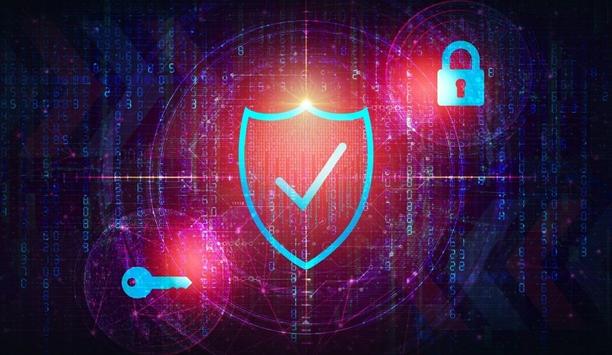
A modern guide to data loss prevention
Download
7 proven solutions for law enforcement key control and asset management
Download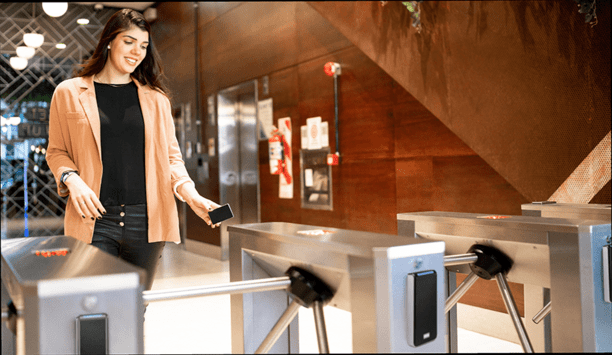
The truth behind 9 mobile access myths
Download
Access control system planning phase 2
Download
